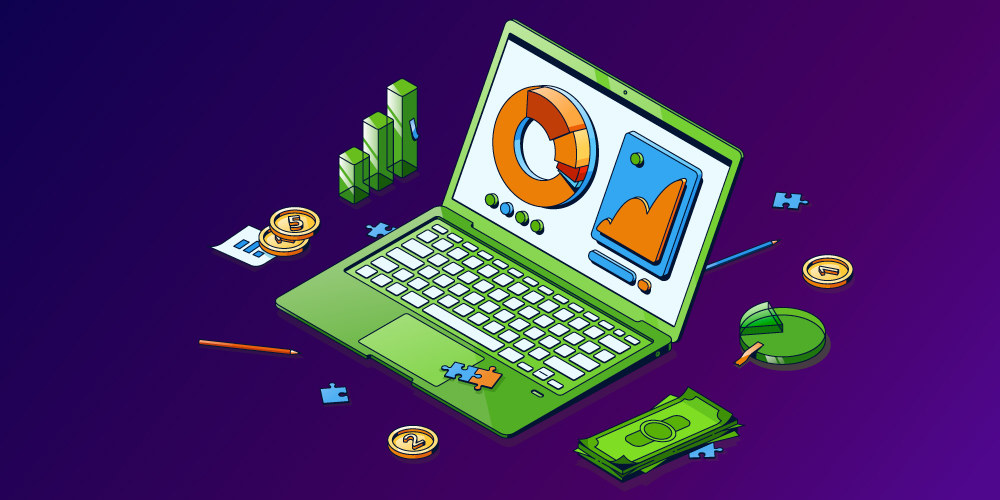In the news or analysis of the crypto markets, we often come across such a term as liquidity, and as it turned out, many do not know its meaning. This small gap can be easily filled by telling you all about this term.
Liquidity and its Importance in the crypto Market
One of the most important and basic concepts in the markets is liquidity. This concept tells us to what extent any asset can be bought or sold at a certain price.
Market liquidity allows us to recognize whether it is easy to buy or sell an asset on the market, given the availability and need to work with this asset. With this in mind, it is easy to see why “liquid” or highly liquid markets have more dynamism and promote party participation than illiquid markets.
However, you will probably ask, what effect does liquidity have on the market? How can liquidity affect the price of an asset? Well, as traders, you will have to deal with these and other issues more than once, so let’s look at them below.
- Liquidity, a fundamental component of markets
As we have already mentioned, liquidity tells us whether an asset can be quickly bought or sold in the market, since this asset is intensively traded on it in large quantities.
A liquid market is a healthy market. This is so important that many exchanges use cryptocurrencies. They buy the services of companies called market makers to generate volumes from the order book, in addition to the exchange volume, if required.
This means that liquidity is linked to concepts such as supply and demand. In this sense, the supply is the amount of a given asset available for trading. While demand is when traders need to convert other assets into a target asset that is being offered.
To simplify the task, imagine the following:
You enter the cryptocurrency exchange and choose the BTC / EUR pair. In this case, the traded assets are BTC and EUR, which means that users can buy or sell these assets from each other. If users enter a large amount of BTC and EUR, this market will be considered as a liquid market, thanks to which you can change your BTC or EUR very quickly without a significant price change.
However, if you choose, for example, a pair like BTC / DRAGON, you will understand that there is almost no liquidity in this market. In such a scenario, you may have a large number of DRAGON tokens at your disposal, but if you want to exchange them for BTC, then you will not be able to do so. And what you can do will be done by lowering the price. So even the little that you manage to exchange will be profitable. And the reason for this is simple: There is no demand for DRAGON tokens, so the liquidity of their markets for exchanges is also absent.
However, we can clearly see how fundamental liquidity is: if there is not enough liquidity in the market, changes between assets become very difficult and even impossible for many altcoins. But this is only one aspect of liquidity, as it can affect the final price of the assets in question.
For example, in a liquid market, rapid asset purchases and sales indicate that we can convert our assets with small losses due to changes in the price of these assets. This is vital in markets such as cryptocurrencies, where the price of assets such as Bitcoin can vary greatly in a few minutes. The opposite happens in an illiquid market, where our exchange transactions can last for hours or days, with the corresponding risk of falling prices, which leads to a loss of money in the process.
But now that we’re talking about assets and their weight in liquidity, it’s useful to know which assets are more or less liquid and how we can best prepare to exchange them.
A liquid market has nothing to do with a dynamic market or a market with a large volume of exchange. For example, the exchange can simulate exchange orders every 10 seconds for the amount of 1,000 rubles. If this is done 10,000 times a day, then they will have a daily volume of 10 million rubles, and the market will work every 10 seconds. But the market may not be liquid, because it is an artificial market with a “market-making” strategy.
To determine how liquid the market is, just look at the order book and observe what happens to the price of the asset if you place a certain order. For example, you can sell 100,000 euros in the BTC-EUR pair on a certain exchange. If a sell order is placed, you will notice that the price of BTC changes a lot, which means that it is illiquid. It may even happen that your operation will never be completed in full because there is no amount of the exchange asset needed to complete the operation.
So, we can say that in a liquid market there is a market with a deep recharge. Depending on how saturated the market is, we can understand how liquid it is.
This simple concept is not taken into account to the extent that it should be, and many people often resort to currencies that become excessively expensive in a short time without taking into account the liquidity of the market. For example, your 1000 euros raised the price of an asset by 500%, but the rest will never be able to sell it, because there is no way that these transactions are processed.
Classification of assets by liquidity

We can classify financial assets by their liquidity:
- Fiat money.
Fiat money is certainly a liquid asset par excellence. The reason is that paper money can be quickly exchanged for any other asset without the risk of significant losses in value. Of course, various forms and representations of fiat money are used here, for example:
- Bank deposits.
- Short-term and long-term debt obligations.
- Notes or assets issued by the company.
- Fixed income or debt issued by private companies.
- Shares or shares of companies.
- Products such as metals (iron, bauxite, copper), precious metals (gold, silver), oil, gas, grain, meat.
- Currency markets, including stock indexes and ETFs.
- Cryptocurrencies.
At the moment, we are interested in the cryptocurrency market, which, although it is positioned in this list as the fourth most liquid asset, the truth is that this market is very wide and even surpasses many stock markets and stock indexes in different parts of the world. This is due to the huge economic growth that cryptocurrencies have achieved since their inception. Evolution and growth, which even today continues to grow rapidly.
And the question arises: is the liquid market not very manageable?
Existing public markets, it is possible to freely view records of purchases and sales, and in addition, having high liquidity, in fact, are markets that are not strongly manipulated. In such circumstances, it is unlikely that the actions of one player or a group of players to manipulate prices can really change the market, and if they do, the market will quickly cope with it. Hence the importance of liquidity, since the higher it is, the more difficult it is to perform this type of action.
The impact of liquidity on the markets

Liquidity is important in markets because it helps determine the pace of negotiations that take place within them. As we have already mentioned, in a highly liquid or liquid market, the opening and closing of exchange operations occurs very quickly. The exact opposite of what happens in a low-liquid or illiquid market. This, of course, also means that in liquid markets, the risk of transactions is significantly lower, compared to illiquid markets.
However, if you are not new to the world of cryptocurrencies, you have probably heard that the high liquidity of certain cryptocurrency markets attracts speculators and such well-known practices as pumping and dumping. This is true, and you need to be very careful with it. But let’s first understand what pump and dump is, and then you can understand the danger. First of all, pump and dump is a strategy aimed at artificially increasing the price of an asset. Thus, speculators seek to multiply the profit they can make by raising the price of the cryptocurrency.
The most recent example is the stock trading app Robinhood and the Reddit group WallStreetBets. In case you forgot, we’ll remind you that they hit the headlines after investors dramatically raised the prices of GameStop, AMC, and other individual stocks.
Following a meteoric rise in GameStop shares from $ 4 a share six months ago to $ 483 a share, Robinhood and other trading platforms have restricted trading in some securities, including GameStop and AMC.
“In the face of extraordinary circumstances in the market, we have today made a tough decision to temporarily restrict purchases of certain securities. As a brokerage firm, we have many financial requirements, ” Robinhood said in a statement. “These requirements exist to protect investors and markets, and we take our obligations to comply with them seriously, including through the measures we have taken today.”
With many retail investors locked out at the moment, the trading frenzy around these stocks, especially GameStop, is now being called a “pump-and-dump” scheme by both traders and outside experts.
Usually, pump-and-dump fraud occurs when scammers boost a company’s stock price by sharing positive but fake information.
Scammers buy up shares on the cheap before spreading rumors that drive the stock price higher and higher, and encourage other investors to profit from the supposed windfall. When the stock peaks, the scammers dump their shares, leaving unsuspecting investors in the hands of fate.
The goal is to raise the price of the currency to a certain level, and then flood the market by selling all your positions. This allows them to generate a large number of coins at a price slightly below the market price, but it gives them a large profit.
Conclusion
Speculators earn a lot of money, while those who participate in the system with small assets and very late, lose them. That is, this is only possible in markets with good liquidity, because they quickly produce and facilitate exchanges.
You can view this as a negative and undesirable moment. But the truth is that this also has its advantages, as more people enter the system, and usually the decline ends up putting the price in a range higher than the initial pump-and-dump mark. In addition, liquidity will increase and overall market dynamics will increase.


